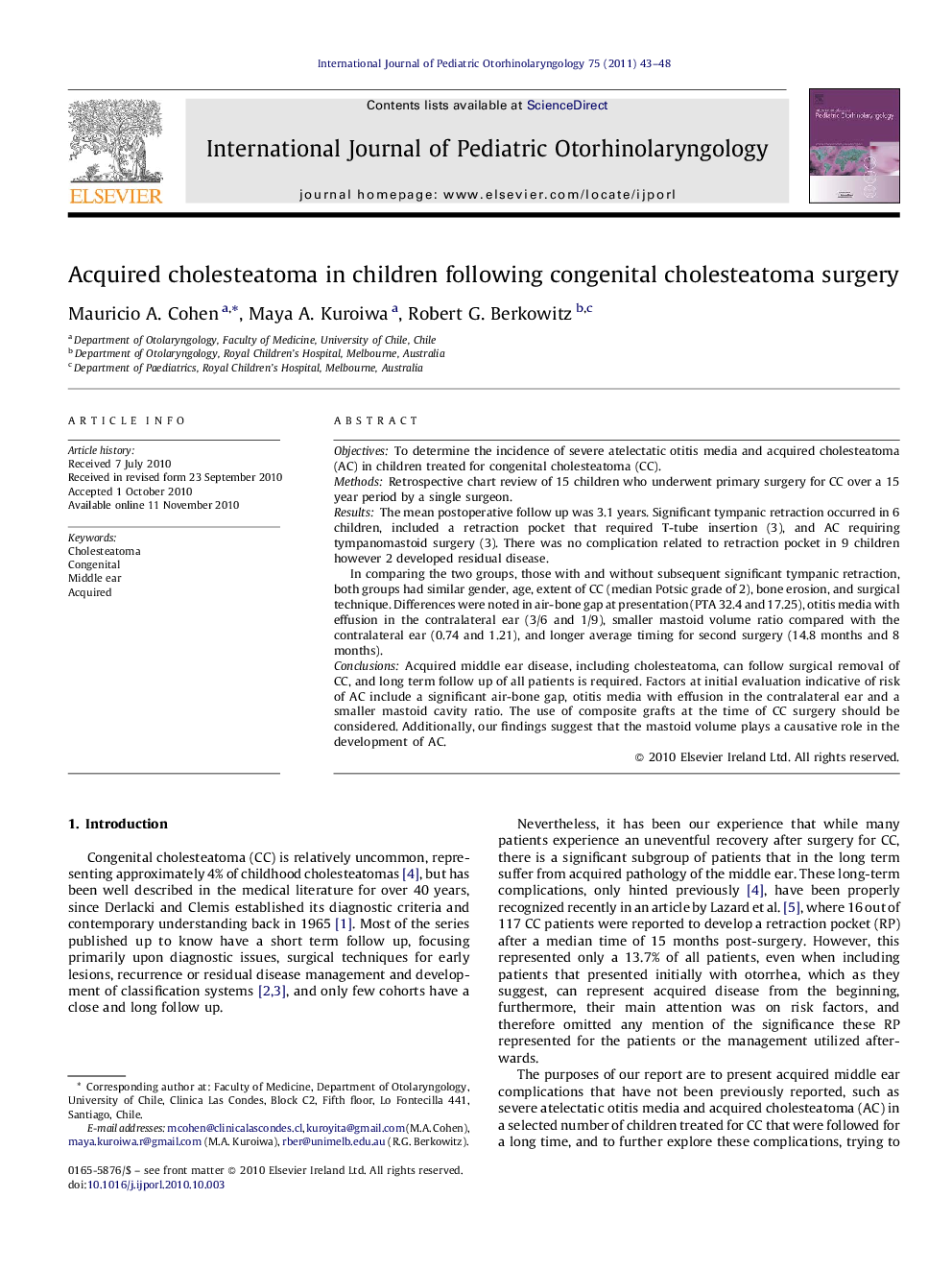| Article ID | Journal | Published Year | Pages | File Type |
|---|---|---|---|---|
| 4113432 | International Journal of Pediatric Otorhinolaryngology | 2011 | 6 Pages |
ObjectivesTo determine the incidence of severe atelectatic otitis media and acquired cholesteatoma (AC) in children treated for congenital cholesteatoma (CC).MethodsRetrospective chart review of 15 children who underwent primary surgery for CC over a 15 year period by a single surgeon.ResultsThe mean postoperative follow up was 3.1 years. Significant tympanic retraction occurred in 6 children, included a retraction pocket that required T-tube insertion (3), and AC requiring tympanomastoid surgery (3). There was no complication related to retraction pocket in 9 children however 2 developed residual disease.In comparing the two groups, those with and without subsequent significant tympanic retraction, both groups had similar gender, age, extent of CC (median Potsic grade of 2), bone erosion, and surgical technique. Differences were noted in air-bone gap at presentation (PTA 32.4 and 17.25), otitis media with effusion in the contralateral ear (3/6 and 1/9), smaller mastoid volume ratio compared with the contralateral ear (0.74 and 1.21), and longer average timing for second surgery (14.8 months and 8 months).ConclusionsAcquired middle ear disease, including cholesteatoma, can follow surgical removal of CC, and long term follow up of all patients is required. Factors at initial evaluation indicative of risk of AC include a significant air-bone gap, otitis media with effusion in the contralateral ear and a smaller mastoid cavity ratio. The use of composite grafts at the time of CC surgery should be considered. Additionally, our findings suggest that the mastoid volume plays a causative role in the development of AC.
